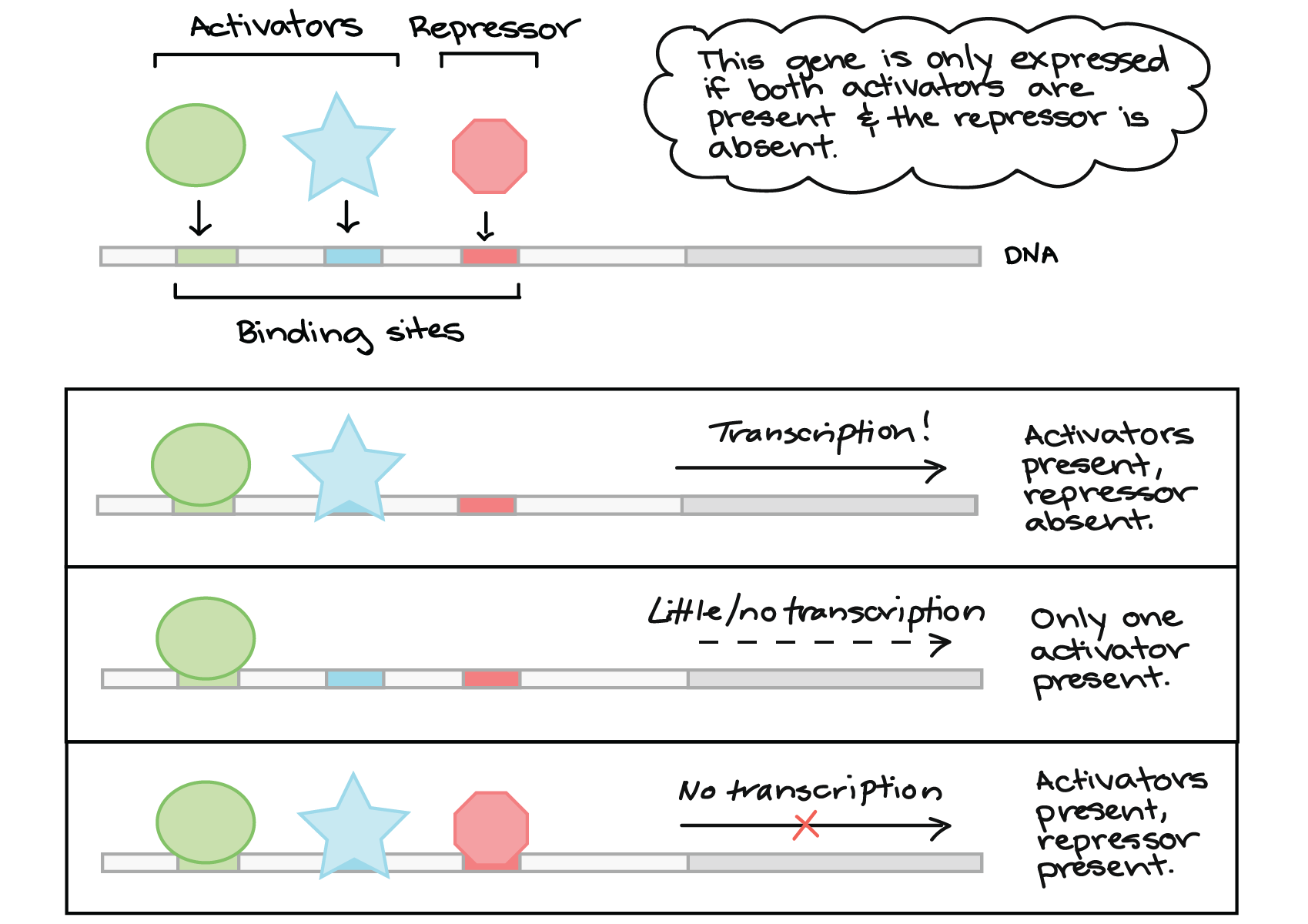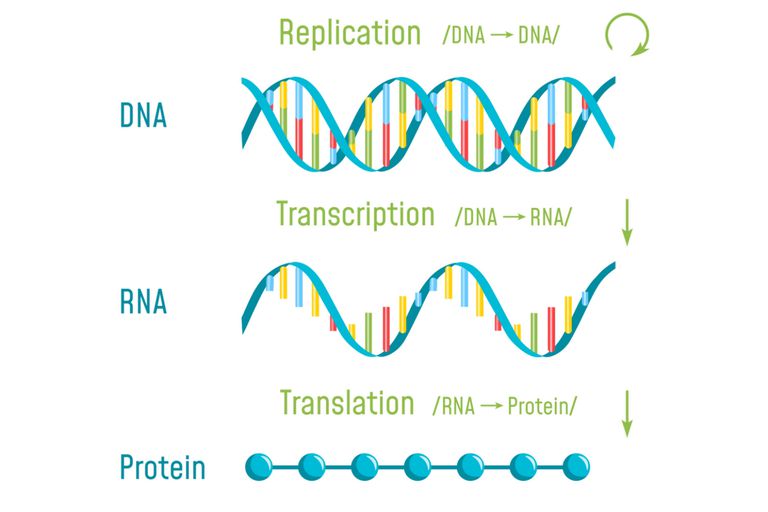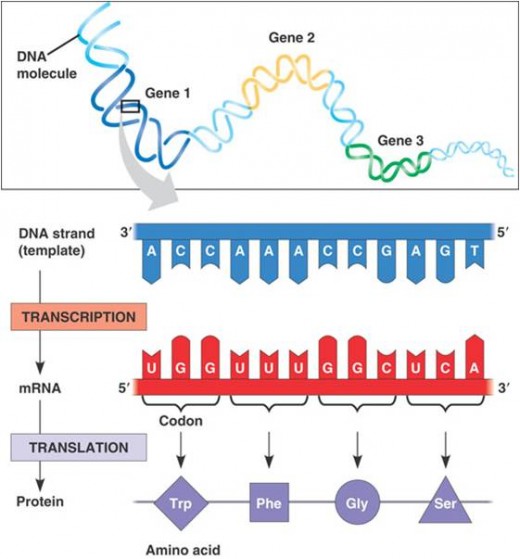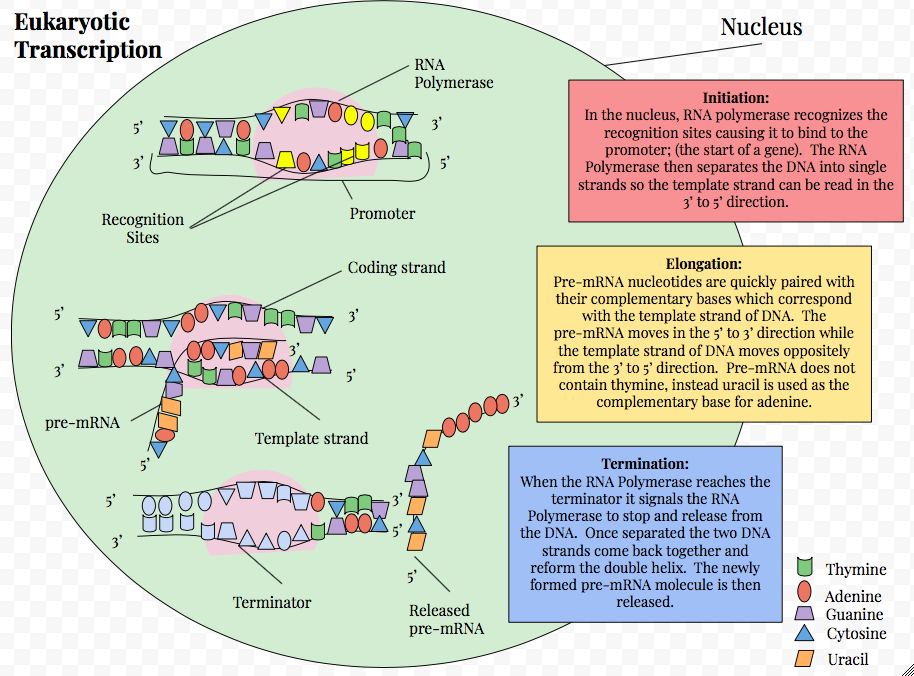Steps of Dna Transcription in Easy to Understand
DNA Transcription
DNA Transcription Introduction:
In DNA transcription, the DNA sequence of a gene is copied out (transcribed) in order to make a molecule of RNA. It is the first step in the expression of the gene. The process of DNA Transcription is done by the enzymes known as RNA polymerases. In another word, DNA Transcription is a process by which the information is rewritten. We use the process of transcription in our daily lives, and our cells also do this in a specialized way. In the genetic form, transcription is the copying out process of the DNA sequence of e gene in order to make an RNA molecule.
Definition of Transcription:
The transcription is the first stage of gene expression by which the gene information is used to construct a functional product like protein. The purpose of the process of transcription is to create RNA, a copy of the DNA sequence of a gene. The RNA copy, or transcript, carries out the information required to create polypeptide for a protein-coded gene. DNA transcription in eukaryotes requires going through some processing steps before translation into proteins.
Stages of Transcription:

Transcription is defined as a copy of the DNA sequence of a gene in order to create an RNA molecule. The DNA transcription of a gene processed its task by using three stages; initiation, elongation, and termination.
-
Initiation:
Initiation is the first stage of transcription, in which RNA polymerase binds the sequence of DNA molecules known as Promoter. It found near the beginning of the gene. Each of the genes has its own promoter. After bounding, the RNA polymerase is separated into the DNA strands, by gives the single-stranded template which is required for transcription.
Transcription Initiation: Initiation is the beginning step or transcription. It lies when the RNA polymerase named enzyme binds to an area or region of a gene, known as �promoter�. The signals to the DNA for unwinding, so the enzymes can be read as the bases in one of the DNA strands. Then, the enzymes ready to create a strand of mRNA by a complementary sequence of bases.
� � �2. Elongation:
Elongation is the second stage, in which one strand of DNA or the template strand works as a template for RNA polymerase. This template one base at a time, the polymerase creates an RNA molecule out of complementary nucleotides, by making a chain, which grows from 5� to 3�. The RNA transcription has the same information as a non-template strand of DNA by copying the information, but it consists of the base uracil (U) instead of the thymine (T).
RNA Polymerase: The RNA polymerase is the main enzyme involved in the transcription that uses a single strand DNA template in order to synthesize a complementary strand for RNA molecule. In simple words, RNA polymerase creates an RNA strand in the 5� to 3� direction, by adding each new nucleotide to the 3� end of the strand.
� � �3.Termination:
Termination is the last stage of DNA Transcription. The RNA transcription is completed by the sequence called �terminator signals�. After they are transcribed, or copy out, they cause the transcript to release from the RNA polymerase.
Transcription Termination: Various processes of regulator transcription termination had discovered in eukaryotes and bacteria. RNA polymerase works for the two principal mechanisms of the termination of transcription occurs in E. coli. In the additional protein, the transcription termination factor known as Rho, which is a need in one mechanism but not in another mechanism. These two mechanisms are referred to as Rho-independent and Rho-dependent termination. The process of the ending of transcription is known as �transcription termination� and occurs once the polymerase transcribes in a DNA sequence called �terminator�.
Termination in Bacteria:
The two main mechanisms are found in bacteria; Rho-dependent and Rho-independent.
Rho-dependent termination: In the mechanism of Rho-dependent termination, the RNA consists of a binding site for a protein known as the �Rho factor�. The Rho factor binds the sequence and begins �climbing up� the transcription toward the RNA polymerase.
Rho-independent termination: In the mechanism of Rho-independent termination, it depends on the particular sequence in the DNA template strand. RNA polymerase approach at the end of the gene being transcribed, it hits an area or region rich in C and G nucleotides. The transcription of RNA begins from this region folds back and complementary C and G nucleotides bind with each other. As a result, a stable hairpin occurs that causes the RNA polymerase to the stall.
Transcription happens for Individual Genes:
All genes cannot be transcribed all the time. In fact, transcription controlled for each gene individually. Cells carefully and accurately regulate the process of DNA Transcription and transcribing just for those genes whose products are required at a specific moment.
Transcription Regulators
Promoters in Bacteria:
Promoter in bacteria is the common feature of DNA transcription regulators in their ability to recognizes the particular DNA pattern to modulate gene expression. The upstream regulation of the region of bacterial coding consists of a promoter, which is the DNA sequence that determines the particular recognition by the RNAP holoenzyme.
In bacteria, the RNAP holoenzyme contains five subunits and an additional sigma subunit factor. The collection of different subunits works as key regulation in bacterial gene expression.
Promoters in Humans:
A member of the PPAR subfamily is PPARgamma in nuclear receptors. In humans, the structure of human PPARgamma cDNA and the genome was defined, and its promoter and particular tissue expression were characterized functionally. The two PPAR isoforms detected in humans such as PPARgamma 1 and PPARgamma 2. In all analysis tissues, PPARgamma 2 was less abundant than the PPARgamma 1.

What happens to the RNA Transcription?
In the process of RNA transcription, in which a DNA sequence of the gene is copied out or transcribed to create an RNA molecule. The main enzyme involved in RNA transcription is known as RNA polymerase. The process of transcription starts when RNA polymerase binds a promoter sequence near the start location of the gene. The process of RNA transcription ends in the process known as �termination�. The termination depends on the sequence in RNA that gives the signal that transcription is finished.
Eukaryotic RNA Modifications:
RNA transcription works as �messenger RNAs� (mRNAs) in bacteria. While in eukaryotes, protein-coding gene transcription is known as �pre-mRNA�, and it has must go through extra processing before it can direct translated. Eukaryotic pre-mRNAs have must be modified ends by the addition of a 5� cap (from the beginning) and 3� poly-A tail (at the end). Many of eukaryotic pre-mRNAs can undergo splicing. Parts of the pre-mRNA are known as �introns�. During this process, introns are chopped out and the remaining pieces, known as �exons�, are stuck back together. The modification ends to raise the stability of the mRNA; on the other hand, splicing provides the correct sequence of mRNA.
DNA Transcription Summary

DNA Transcription in Prokaryotes and Eukaryotes

hammackpregivempank.blogspot.com
Source: https://ibiologia.com/dna-transcription/



0 Response to "Steps of Dna Transcription in Easy to Understand"
Post a Comment